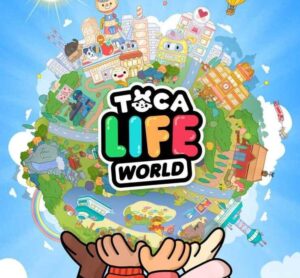A Phoenix Rises: EA’s ‘All-In’ Strategy to Rebuild the Battlefield Legacy
Popular Now
 Genshin Impact
Genshin Impact
 Garena Free Fire: Kalahari
Garena Free Fire: Kalahari
 Fall Guys
Fall Guys
 Gacha Club
Gacha Club
 Sonic the Hedgehog™ Classic
Sonic the Hedgehog™ Classic
 Black Myth: Wukong
Black Myth: Wukong
 Toca Boca World
Toca Boca World
 BeamNG.drive
BeamNG.drive
 Roblox
Roblox
 Brawl Stars
Brawl Stars 
Following the commercially successful but critically disastrous launch of Battlefield 2042, Electronic Arts (EA) has initiated a dramatic and costly franchise overhaul for the upcoming Battlefield 6. The approach has been described as “razing Battlefield to its foundations” to build something “explosively new.” This radical restructuring is underscored by an investment that EA CEO Andrew Wilson calls “more behind this Battlefield than any Battlefield product before it,” with a projected budget reportedly exceeding $400 million, placing it among the most expensive game productions in history.
The sentiment driving this unprecedented effort comes directly from the top, where executives are operating with a profound sense of obligation to the long-time community. Rebecka Coutaz, who took the helm at DICE just two weeks after 2042’s launch, stated that she “felt an obligation to create one of the best Battlefields the world has ever seen.” This singular focus on quality and a return to the series’ roots is the core of EA’s massive IP investment strategy.
 The Radical Reconstruction: Returning to the Modern Warfare Pinnacle
The Radical Reconstruction: Returning to the Modern Warfare Pinnacle
The fundamental shift for Battlefield 6 is a clear, decisive pivot away from the near-future chaos of its predecessor and a direct return to the beloved modern era of Battlefield 3 and Battlefield 4. Developers at DICE, now working under the new collective brand Battlefield Studios and overseen by Vince Zampella, are focused on three major design corrections:
1. Classic Scale and Intensity: The Return to 64-Player Matches
- A major failure point of 2042 was the experimental 128-player match size, which Design Director Fahasat ‘Fas’ Salim admits “just didn’t catch on.”
- Battlefield 6 will officially return to the 64-player format for its core Conquest and Breakthrough modes. The developers concluded that 64 players provides the optimal balance of massive warfare, tactical squad play, and map flow—the core elements that define the Battlefield sandbox.
2. Core Pillars Reaffirmed: Classes, Destruction, and Grounded Combat
- The divisive ‘Specialist’ system from 2042 has been jettisoned. Battlefield 6 brings back the classic, four-pillar Class System: Assault, Engineer, Support, and Recon, ensuring clear team roles and reliance on teamwork.
- The new installment is heavily emphasizing Environmental Destructibility, a signature feature that was perceived as lacking in 2042. Maps are designed with widespread demolition in mind, allowing players to reshape the battlefield dynamically, which is crucial for competitive FPS gaming.
- The overall tone is a deliberate shift to a more grounded, realistic military shooter, with a new “Kinesthetic Combat System” improving movement and immersion, a clear nod to the feel of the best installments in the franchise.
3. Expanding the Platform: Single-Player, Portal, and Battle Royale
- EA views Battlefield 6 not merely as a product, but as a long-term Live Service Platform. This is evidenced by the development being a multi-studio effort, including DICE, Criterion Games, Motive Studios, and Ripple Effect Studios.
- The game features a full, linear Single-Player Campaign set in 2027, focusing on a conflict between a fractured NATO and a private military company, a structure designed to reintroduce the series’ dramatic narrative elements.
- A vastly expanded Battlefield Portal user-creation toolset is returning, giving players unprecedented control to create custom game experiences and tap into the series’ extensive history.
- Critically, a new, dedicated Battle Royale mode is expected. Given the involvement of Vince Zampella (who oversaw Apex Legends) and Byron Beede (a former executive on Call of Duty and Warzone), this mode is poised to be a major play for the high-value Free-to-Play market and competitor to the Call of Duty: Warzone ecosystem.
 Community-Driven Development: The ‘Battlefield Labs’ Effect
Community-Driven Development: The ‘Battlefield Labs’ Effect
A key difference in the development cycle for Battlefield 6 has been the prominent use of “Battlefield Labs,” a closed-access, worldwide playtest program. This is a direct response to the criticism that 2042 was launched without sufficient community validation. The Labs initiative allows DICE to collect real-time feedback and make gameplay adjustments, ensuring that the game’s core experience aligns with fan expectations. Although the process of incorporating old maps has proven “much more complicated than people think” due to the need to adapt them to the new destruction physics, the commitment to transparency and iterative testing is a strategic move to restore shattered community trust.
EA’s massive financial commitment and the clear, back-to-basics design philosophy, spearheaded by new leadership, signal a genuine attempt to return Battlefield to its competitive peak against rivals like Call of Duty and establish it as a stable, long-term FPS platform. The stakes are immense, but the internal sentiment suggests a deep-seated mission: to deliver the definitive Battlefield experience.
High-Value Keywords: Battlefield 6 Release Date, EA Investment, DICE Overhaul, 64 Player Battlefield, Battlefield Class System, Battlefield Destructibility, Battlefield Portal 2.0, Vince Zampella Strategy, FPS Competition, Battlefield 3 Spiritual Successor, Battlefield Battle Royale.







 The Radical Reconstruction: Returning to the Modern Warfare Pinnacle
The Radical Reconstruction: Returning to the Modern Warfare Pinnacle Community-Driven Development: The ‘Battlefield Labs’ Effect
Community-Driven Development: The ‘Battlefield Labs’ Effect